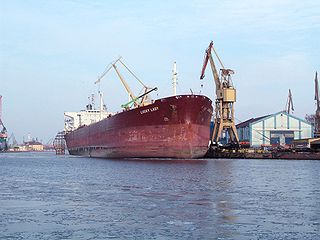Negligence is a failure to exercise appropriate and/or ethical ruled care expected to be exercised amongst specified circumstances. The area of tort law known as negligence involves harm caused by failing to act as a form of carelessness possibly with extenuating circumstances. The core concept of negligence is that people should exercise reasonable care in their actions, by taking account of the potential harm that they might foreseeably cause to other people or property.
A tort is a civil wrong that causes a claimant to suffer loss or harm, resulting in legal liability for the person who commits the tortious act. Tort law can be contrasted with criminal law, which deals with criminal wrongs that are punishable by the state. While criminal law aims to punish individuals who commit crimes, tort law aims to compensate individuals who suffer harm as a result of the actions of others. Some wrongful acts, such as assault and battery, can result in both a civil lawsuit and a criminal prosecution in countries where the civil and criminal legal systems are separate. Tort law may also be contrasted with contract law, which provides civil remedies after breach of a duty that arises from a contract. Obligations in both tort and criminal law are more fundamental and are imposed regardless of whether the parties have a contract.

Breach of contract is a legal cause of action and a type of civil wrong, in which a binding agreement or bargained-for exchange is not honored by one or more of the parties to the contract by non-performance or interference with the other party's performance. Breach occurs when a party to a contract fails to fulfill its obligation(s), whether partially or wholly, as described in the contract, or communicates an intent to fail the obligation or otherwise appears not to be able to perform its obligation under the contract. Where there is breach of contract, the resulting damages have to be paid to the aggrieved party by the party breaching the contract.

English tort law concerns the compensation for harm to people's rights to health and safety, a clean environment, property, their economic interests, or their reputations. A "tort" is a wrong in civil law, rather than criminal law, that usually requires a payment of money to make up for damage that is caused. Alongside contracts and unjust enrichment, tort law is usually seen as forming one of the three main pillars of the law of obligations.

In common law jurisdictions, a misrepresentation is a false or misleading statement of fact made during negotiations by one party to another, the statement then inducing that other party to enter into a contract. The misled party may normally rescind the contract, and sometimes may be awarded damages as well.
Consequential damages, otherwise known as special damages, are damages that can be proven to have occurred because of the failure of one party to meet a contractual obligation, a breach of contract. From a legal standpoint, an enforceable contract is present when it is: expressed by a valid offer and acceptance, has adequate consideration, mutual assent, capacity, and legality. Consequential damages go beyond the contract itself and into the actions that arise from the failure to fulfill. The type of claim giving rise to the damages, such as whether it is a breach of contract action or tort claim, can affect the rules or calculations associated with a given type of damages. For example, consequential damages are a potential type of expectation damages that arise in contract law.
Causation is the "causal relationship between the defendant's conduct and end result". In other words, causation provides a means of connecting conduct with a resulting effect, typically an injury. In criminal law, it is defined as the actus reus from which the specific injury or other effect arose and is combined with mens rea to comprise the elements of guilt. Causation only applies where a result has been achieved and therefore is immaterial with regard to inchoate offenses.
In English tort law, there can be no liability in negligence unless the claimant establishes both that they were owed a duty of care by the defendant, and that there has been a breach of that duty. The defendant is in breach of duty towards the claimant if their conduct fell short of the standard expected under the circumstances.
Causation in English law concerns the legal tests of remoteness, causation and foreseeability in the tort of negligence. It is also relevant for English criminal law and English contract law.
In English law, remoteness between a cause of action and the loss or damage sustained as a result is addressed through a set of rules in both tort and contract, which limit the amount of compensatory damages available for a wrong.

Expectation damages are damages recoverable from a breach of contract by the non-breaching party. An award of expectation damages protects the injured party's interest in realising the value of the expectancy that was created by the promise of the other party. Thus, the impact of the breach on the promisee is to be effectively "undone" with the award of expectation damages.

In RePolemis & Furness, Withy & Co Ltd (1921) is an English tort case on causation and remoteness in the law of negligence.

Overseas Tankship (UK) Ltd v Morts Dock and Engineering Co Ltd, commonly known as Wagon Mound , is a landmark tort law case, which imposed a remoteness rule for causation in negligence. The Privy Council held that a party can be held liable only for loss that was reasonably foreseeable. Contributory negligence on the part of the dock owners was also relevant in the decision, and was essential to the outcome, although not central to this case's legal significance.
The tort of deceit is a type of legal injury that occurs when a person intentionally and knowingly deceives another person into an action that damages them. Specifically, deceit requires that the tortfeasor

Royscot Trust Ltd v Rogerson[1991] EWCA Civ 12 is an English contract law case on misrepresentation. It examines the Misrepresentation Act 1967 and addresses the extent of damages available under s 2(1) for negligent misrepresentation.

The Achilleas or Transfield Shipping Inc v Mercator Shipping Inc [2008] UKHL 48 is an English contract law case, concerning remoteness of damage.
Jackson v Royal Bank of Scotland [2005] UKHL 3 is an English contract law case, which concerns remoteness of damage.

Parsons (Livestock) Ltd v Uttley Ingham & Co Ltd [1978] QB 791 is an English contract law case, concerning remoteness of damage. In it, the majority held that losses for breach of contract are recoverable if the type or kind of loss is a likely result of the breach of contract. Lord Denning MR, dissenting on the reasoning, held that a distinction should be drawn between losses for physical damage and economic losses.

C Czarnikow Ltd v Koufos or The Heron II [1969] 1 AC 350 is an English contract law case, concerning remoteness of damage. The House of Lords held that the "remoteness" test, as a limit to liability, is, in contract, more restrictive than it is in tort.

Chapman v Hearse is a significant case in common law related to duty of care, reasonable foreseeability and novus actus interveniens within the tort of negligence. The case concerned three parties; Chapman who drove negligently, Dr Cherry who assisted him on the side of the road, and Hearse who, in driving negligently, killed Dr Cherry while he was assisting Chapman. In the Supreme Court of South Australia, Hearse was found liable for damages to Dr Cherry's estate under the Wrongs Act 1936. Hearse sought to reclaim damages from Chapman due to his alleged contributory negligence; Chapman was found liable to one quarter of the damages. Chapman appealed the case to the High Court of Australia on August 8, 1961, but it was dismissed as the results of his negligence were deemed reasonably foreseeable. A duty of care was established between Chapman and the deceased and his claim of novus actus interveniens was rejected. Dr Cherry was considered a 'rescuer' and his respective rights remained.








